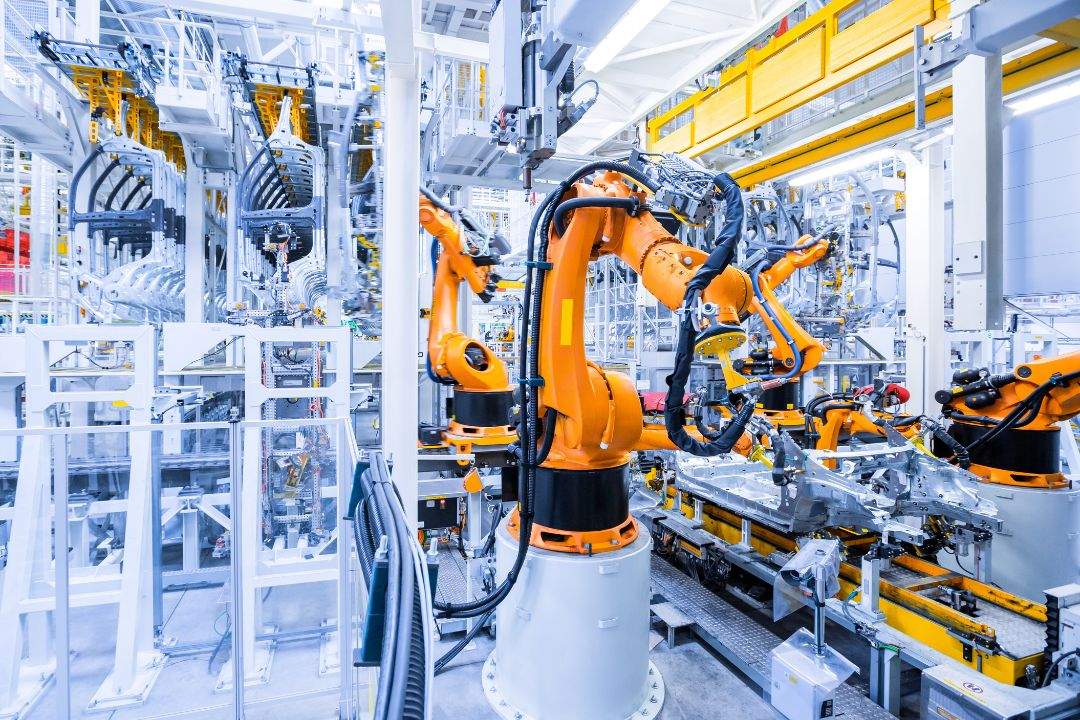Table of Contents
The construction industry is on the brink of a transformational era with the advent of automation, highlighted by innovations. This shift towards automated construction, using concrete robotics, is not merely an adaptation of new machinery but a comprehensive overhaul of traditional construction methods. This evolution promises enhanced efficiency, precision, and safety, fundamentally changing how structures are conceived, designed, and built. This article looks into the diverse facets of automated construction, providing an in-depth look at its impact and potential. It aims to be an informative piece for a broad audience, including high school students, offering insights into the future of construction technology.
Robotics and Artificial Intelligence in Construction
Robotics combined with Artificial Intelligence (AI) is revolutionising construction. These intelligent robots can perform intricate tasks, from laying bricks to assembling intricate building frameworks. AI’s role in these robots is crucial; it enables them to analyse their environment, make autonomous decisions, and learn from their actions, thereby minimising errors and maximising efficiency. These robots have sensors and vision systems, allowing them to adapt to different construction scenarios and perform tasks precisely that surpass traditional methods.
3D Printing in Construction
3D printing is a groundbreaking advancement in construction, offering a novel approach to building structures. This technology uses materials such as specialised concrete to create buildings layer by layer. It helps create complex architectural forms that can be challenging or impossible to achieve with traditional construction methods. 3D printing in construction reduces waste significantly and speeds up the building process, as these printers can work continuously without the need for breaks, drastically reducing the overall construction time.
Automated Site Monitoring and Management
Automated site monitoring and management involve drones and autonomous vehicles with advanced cameras and sensors. These technologies enable continuous and real-time monitoring of construction sites, offering insights into project progress, resource distribution, and potential safety hazards. This constant surveillance and data collection leads to more effective project management, ensuring that construction projects adhere to planned timelines, budgets, and safety standards.
Smart Construction Materials
The development of intelligent construction materials is set to play a significant role in the future of automated construction. These innovative materials can react to environmental stimuli, repair minor damages automatically, or integrate additional functionalities like energy generation. For example, concrete embedded with sensors can continuously monitor a building’s structural integrity and signal when maintenance is required, ensuring long-term durability and safety.
Prefabrication and Modular Construction
Prefabrication and modular construction are increasingly crucial in automated construction. This approach involves manufacturing building components in a controlled factory environment and then taking them to the site for assembly. Automation in the prefabrication process ensures higher accuracy, better quality control, and substantially reduced construction time and labour costs. Modular construction also allows for more flexible design and effortless scalability of buildings, as modules can be added or removed as needed.
Integration of IoT and Data Analytics
Integrating the Internet of Things (IoT) and data analytics transforms the construction industry into a more connected and intelligent operation. IoT devices installed at construction sites collect vast amounts of data, which, when analysed, offer valuable insights. These insights help optimise construction processes, foresee maintenance requirements, and enhance the functionality of buildings after construction. The data collected can be used to improve energy efficiency, optimise building layouts, and ensure the buildings meet the evolving needs of their occupants.
Enhanced Safety and Risk Management
A critical aspect of the future of automated construction is the significant enhancement in safety and risk management. Automated systems, such as drones and robotic surveyors, can access hazardous or hard-to-reach areas, reducing the need for human workers to be exposed to potential risks. This capability is particularly beneficial in high-rise construction, deep foundation laying, or working in unstable environments where human safety can be compromised. Moreover, automation in building incorporates advanced risk assessment algorithms that can predict and mitigate potential accidents, ensuring a safer work environment. The data collected by these systems can be analysed to understand the common causes of accidents and near-misses, leading to more robust safety protocols and practices.
Integration of Virtual and Augmented Reality
VR allows architects, engineers, and clients to immerse themselves in a virtual construction project model, offering a detailed preview of the finished structure. This immersive experience aids in better design decisions, identifying potential issues before construction begins, and enhancing client satisfaction. AR, on the other hand, overlays digital information onto the physical construction site. For instance, workers wearing AR headsets can see detailed instructions or diagrams superimposed onto their field of view, helping them understand complex assemblies or identify where components should be placed.
Conclusion
The future of automated construction, spearheaded by technologies like using concrete robotics, signifies a pivotal shift in the construction industry. Integrating robotics, AI, 3D printing, and intelligent materials characterises this move towards automation. These innovations are creating a new era in construction that promises increased efficiency, sustainability, and safety. As this field continues to evolve, it offers solutions to some significant challenges faced by the construction industry, such as reducing environmental impact and meeting the increasing demand for infrastructure. This transition to automated construction is not just a technological leap forward but a fundamental change in the approach to building and designing structures, heralding a more advanced and efficient era in the construction industry.
